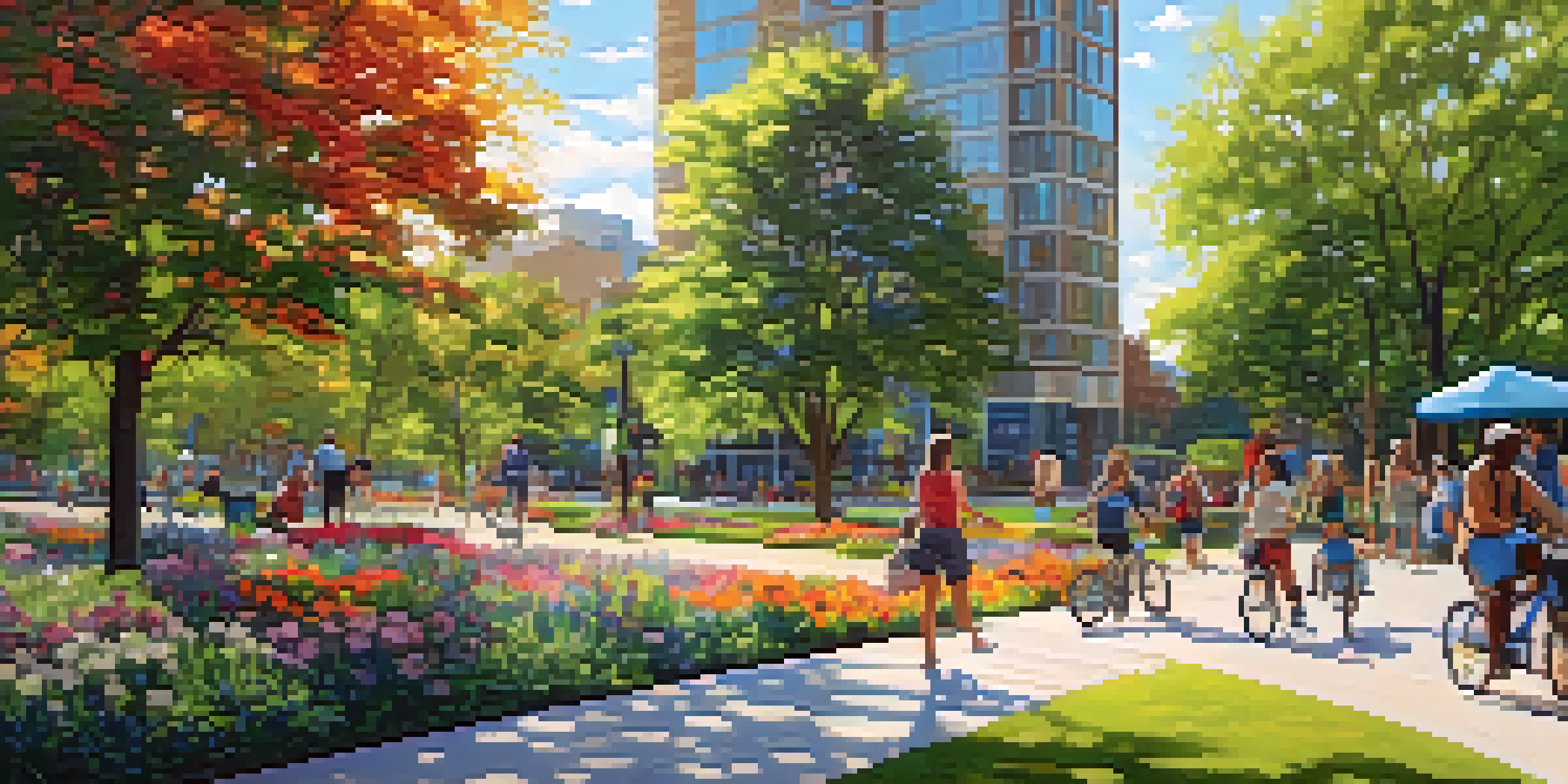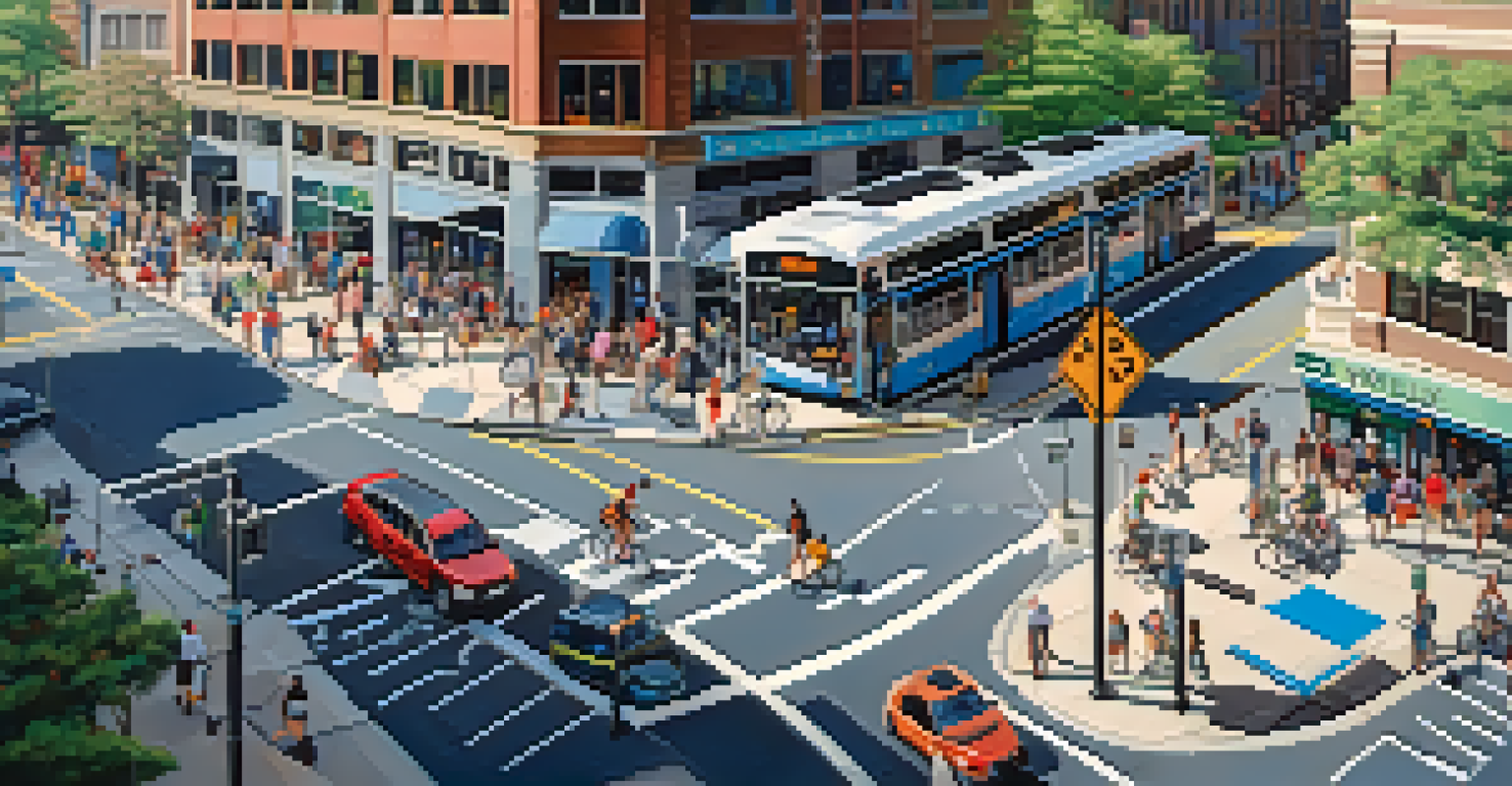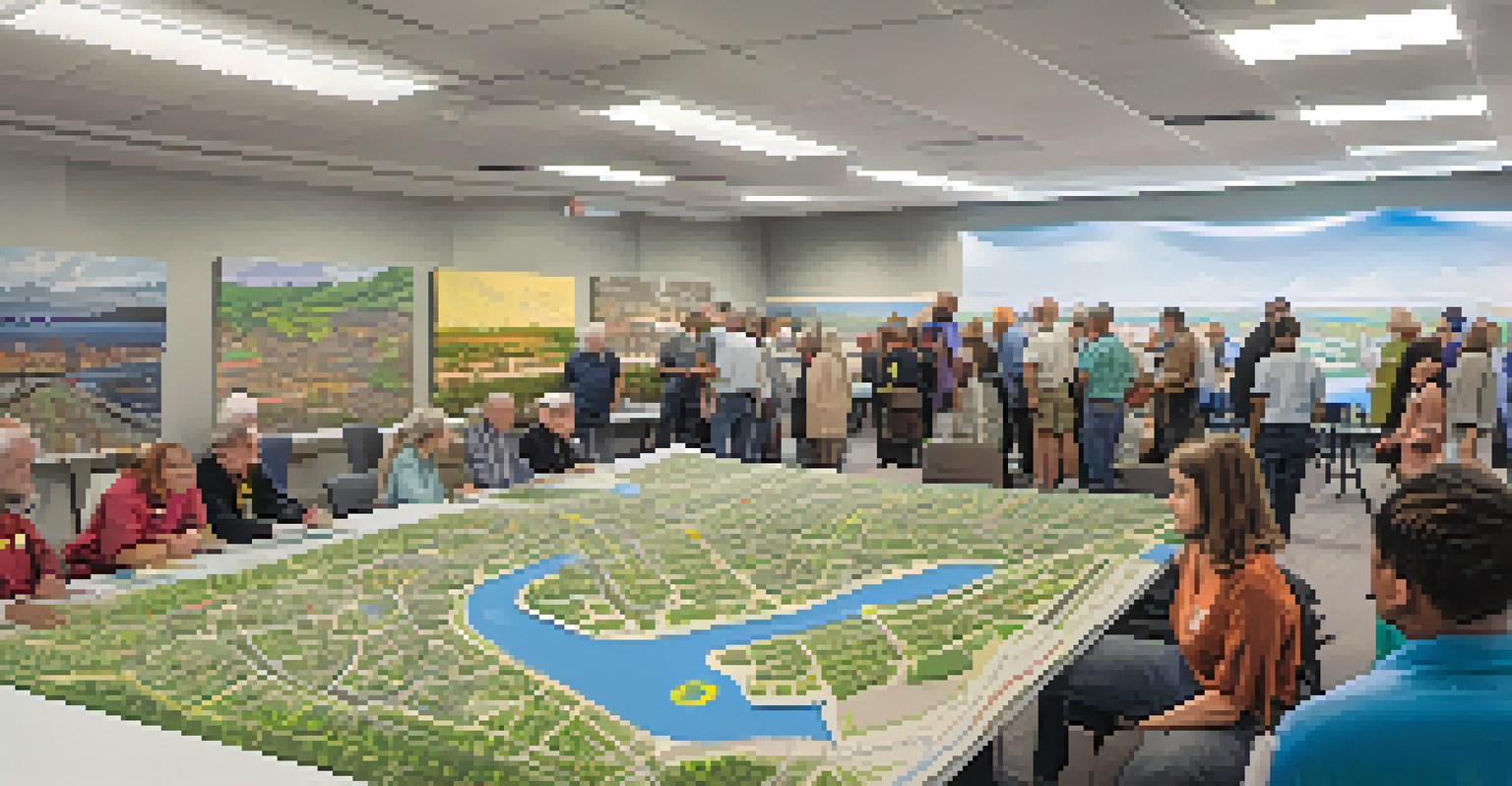Sustainability in Raleigh’s Transportation Plans for the Future

Raleigh's Vision for Sustainable Transportation
Raleigh is setting its sights on a future where transportation is not just efficient but also eco-friendly. The city's vision incorporates various modes of transport, including walking, biking, and public transit, all designed to reduce carbon footprints. By prioritizing sustainability in its transportation plans, Raleigh aims to create a healthier environment for its citizens.
The future of transportation is not just about getting from point A to point B; it's about how we can do that sustainably and equitably for all communities.
This forward-thinking approach aligns with global trends towards greener urban spaces. For instance, cities like Copenhagen have successfully integrated extensive cycling networks, and Raleigh is looking to replicate similar successes. As more residents choose sustainable transportation options, the city can expect improved air quality and reduced traffic congestion.
Moreover, Raleigh’s commitment to sustainability is a reflection of its community values. Residents are increasingly advocating for greener practices, which is influencing local policies. By listening to its citizens, Raleigh is not just planning for the future but actively shaping it.
Investing in Public Transit Infrastructure
A key element of Raleigh's sustainable transportation strategy is its investment in public transit. The city is expanding its bus services and exploring options for light rail to connect different neighborhoods efficiently. This focus on public transit will not only ease the burden on roads but also provide affordable travel options for all residents.

For example, the GoRaleigh transit system has been enhancing its routes and frequency to meet rising demand. By ensuring that public transportation is a viable option for daily commutes, Raleigh can encourage more residents to leave their cars at home. This shift can play a significant role in reducing emissions and promoting a more sustainable urban environment.
Raleigh's Shift to Sustainable Transit
Raleigh is committed to creating a sustainable transportation system that prioritizes eco-friendly options like public transit, biking, and walking.
Furthermore, improving public transit can stimulate local economies by making it easier for people to access jobs and services. As Raleigh invests in this infrastructure, the benefits will ripple through the community, creating more opportunities for everyone.
Promoting Active Transportation Options
Raleigh is also focusing on promoting active transportation methods such as walking and biking. The city has been working to develop safer streets with dedicated bike lanes and pedestrian paths. This initiative not only encourages physical activity but also reduces reliance on motorized vehicles.
A city's transportation system is a reflection of its values; if we prioritize accessibility and sustainability, we create a better environment for everyone.
For instance, the recent improvements in the Capital Area Greenway system have made it easier for residents to navigate the city on foot or by bike. This interconnected network of paths supports a healthier lifestyle and fosters a stronger sense of community. As more people choose to walk or bike, Raleigh can expect to see a notable decrease in traffic-related issues.
Moreover, by making active transportation more appealing, Raleigh enhances its attractiveness as a vibrant place to live. Families, students, and professionals are all drawn to neighborhoods that prioritize walkability and bike-friendliness, ultimately boosting the local economy.
Integrating Technology in Transportation Planning
Technology plays a pivotal role in Raleigh's transportation future. The city is exploring smart traffic management systems that utilize real-time data to optimize traffic flow. By leveraging technology, Raleigh hopes to reduce congestion and improve the overall efficiency of its transportation networks.
Additionally, the rise of electric vehicles (EVs) is being integrated into Raleigh's planning. The city is working to expand its network of EV charging stations, making it easier for residents to make the switch. This investment not only supports cleaner transportation but also positions Raleigh as a leader in embracing innovation.
Community Input Drives Planning
Engaging residents through feedback and workshops ensures Raleigh's transportation plans reflect the community's needs and values.
The collaboration between city planners and tech companies can lead to groundbreaking improvements in how residents experience transportation. As Raleigh continues to embrace technology, it opens doors to new solutions that can enhance sustainability and connectivity.
Community Engagement in Transportation Planning
Engaging the community is crucial for Raleigh’s transportation plans to succeed. City officials are actively seeking input from residents through surveys and public forums. This inclusive approach ensures that the transportation strategies reflect the needs and desires of the community.
For example, recent workshops have allowed residents to voice their opinions on proposed projects and share their experiences with current transit options. This feedback is invaluable in shaping policies that resonate with the community's values. When residents feel heard and involved, they are more likely to support sustainable initiatives.
Moreover, fostering a culture of collaboration can lead to innovative solutions and a stronger sense of ownership among residents. By building partnerships with local organizations and businesses, Raleigh can create a transportation network that truly serves everyone.
Addressing Equity in Transportation Access
A sustainable transportation plan must also address equity issues, ensuring that all residents have access to safe and reliable options. Raleigh is prioritizing underserved communities by evaluating current transportation gaps and developing targeted strategies. This commitment aims to create a more just and accessible transportation system for everyone.
For instance, the city is looking into expanding bus routes in areas that have limited access to public transit. By ensuring that vulnerable populations can reach jobs, schools, and healthcare, Raleigh promotes social equity and economic opportunity. This approach not only serves a humanitarian purpose but also strengthens the community as a whole.
Equity in Transportation Access
Raleigh is focusing on addressing transportation equity by enhancing access for underserved communities, promoting social justice and economic opportunity.
Furthermore, inclusive transportation planning fosters a sense of belonging among residents. When everyone has access to the same resources, it enhances community cohesion and overall quality of life, making Raleigh a more vibrant place to live.
Measuring Success: Metrics for Sustainable Transportation
To ensure the effectiveness of its transportation plans, Raleigh is implementing metrics to measure success. This involves tracking key performance indicators such as public transit ridership, bicycle usage, and overall emissions reductions. By regularly assessing these metrics, the city can make informed adjustments to its strategies.
For example, if the data shows a decline in bus ridership, city officials can investigate potential causes and explore solutions to increase usage. This data-driven approach allows Raleigh to stay agile and responsive to the needs of its residents. Transparency in reporting these metrics also fosters trust between the city and its citizens.

Ultimately, measuring success will help Raleigh refine its sustainability efforts over time. By setting clear goals and evaluating progress, the city can celebrate its achievements while identifying areas for improvement, ensuring a brighter future for all.